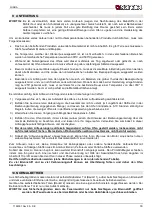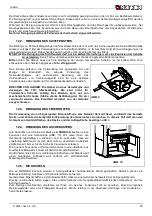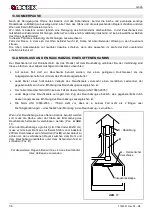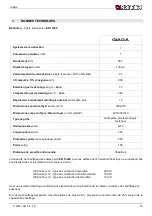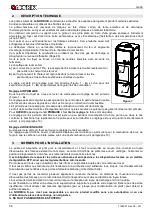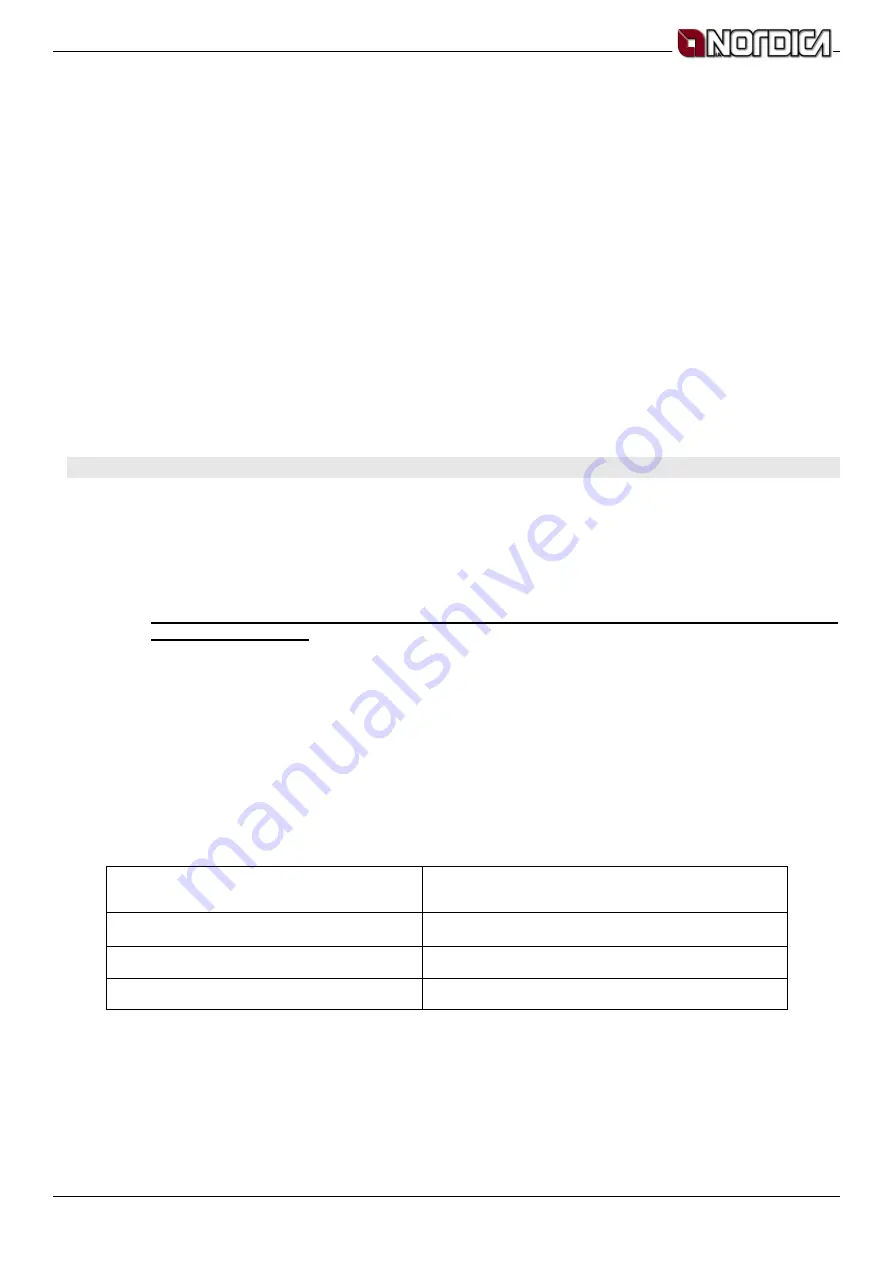
GIADA
7196001 Rev.05 – EN
23
2) During the first starts, do not load excessively the combustion chamber (about half the quantity indicated in the
instructions manual) and keep the product continuously ON for at least 6-10 hours with the registers less open
than the value indicated in the instructions manual.
3) Repeat this operation for at least 4-5 or more times, according to your possibilities.
4) Then load more and more fuel (following in any case the provisions contained in the installation booklet
concerning maximum load) and, if possible, keep the lighting periods long avoiding, at least in this initial phase,
short ON/OFF cycles.
5) During the first starts, no object should be leaned on the appliance and in detail on enamelled surfaces.
Enamelled surfaces must not be touched during heating.
6) Once the «break-in» has been completed, it is possible to use the product as the motor of a car, avoiding abrupt
heating with excessive loads.
To light the fire, it is suggested to use small wood pieces together with paper or other traded lighting means.
It is
forbidden to use any liquid substance as for ex. alcohol, gasoline, oil and similar.
The primary air controls has to be opened completely. When wood starts to burn, it is possible to feed it again, close
the primary air control (by pushing it to the back) control the combustion through the secondary air register according
to the provisions of paragraph 10.
Please always be present during this phase.
Never overload the appliance
(see the technical table - max. quantity of fuel that can be loaded) .
Too much fuel and too much air for combustion can cause overheating and therefore damage the stove.
10. NORMAL OPERATION
For safety reasons the door of the appliances with constructive system 1, must be opened only for the loading of the
fuel or for removing the ashes, while during the operation and the rest, the door of the hearth must remain closed.
The appliances with constructive system 2 must be connected to their own flue. The operating with open door is
allowed under supervision.
IMPORTANT: For safety reasons the door of the hearth can be opened only for the loading of the fuel. The
hearth door must always remain closed during operation or rest.
ATTENTION
:
In order to avoid the breaking of temperate glass found on the top part of the stove, please do
not put on any object. The breaking of the glasses can be only caused by mechanical shocks
(crashes or exceeding load.). As consequence their substitution is not covered by the
guarantee
.
The nominal power of the appliance is of kW 7. This power will be reached with a minimum depression in the chimney
of 12 Pascal (=1.2 mm of water column).
With the control located on the front of the appliance (Picture 1 Position
A
), it is possible to adjust the heat emission of
the same. This is to be opened according to the calorific need. The best combustion (with minimum emissions) is
reached when, by loading the wood, most part of the air for combustion flows through the secondary air register.
Never overload the appliance (see the hourly wood load in the table here below). Too much fuel and too much
air for the combustion may cause overheating and then damage the stove.
You should always use the stove with the door closed in order to avoid damages due to overheating (forge effect).
The inobservance of this rule makes the warranty expire.
FUEL
Wood (length 30cm, circumference 30 cm )
Max
quantity in
( kg/h )
2,1
Primary air
Picture 1 pos.
A
¼ open
Secondary air
Picture 1 pos.
B
closed
The
GIADA
stove is an appliance with intermittent operation.
Besides the adjustment of air for combustion, the intensity of the combustion and consequently the thermal
performance of your appliance is influenced by the stack. A good draught of the stack requires a stricter adjustment of
air for combustion, while a poor draught requires a more precise adjustment of air for combustion.
To verify the good combustion, check whether the smoke coming out from the stack is transparent.
If it is white, it means that the appliance is not properly adjusted or the wood is too wet; if instead the smoke is grey or
black, it signals that the combustion is not complete (it is necessary a greater quantity of secondary air.

























